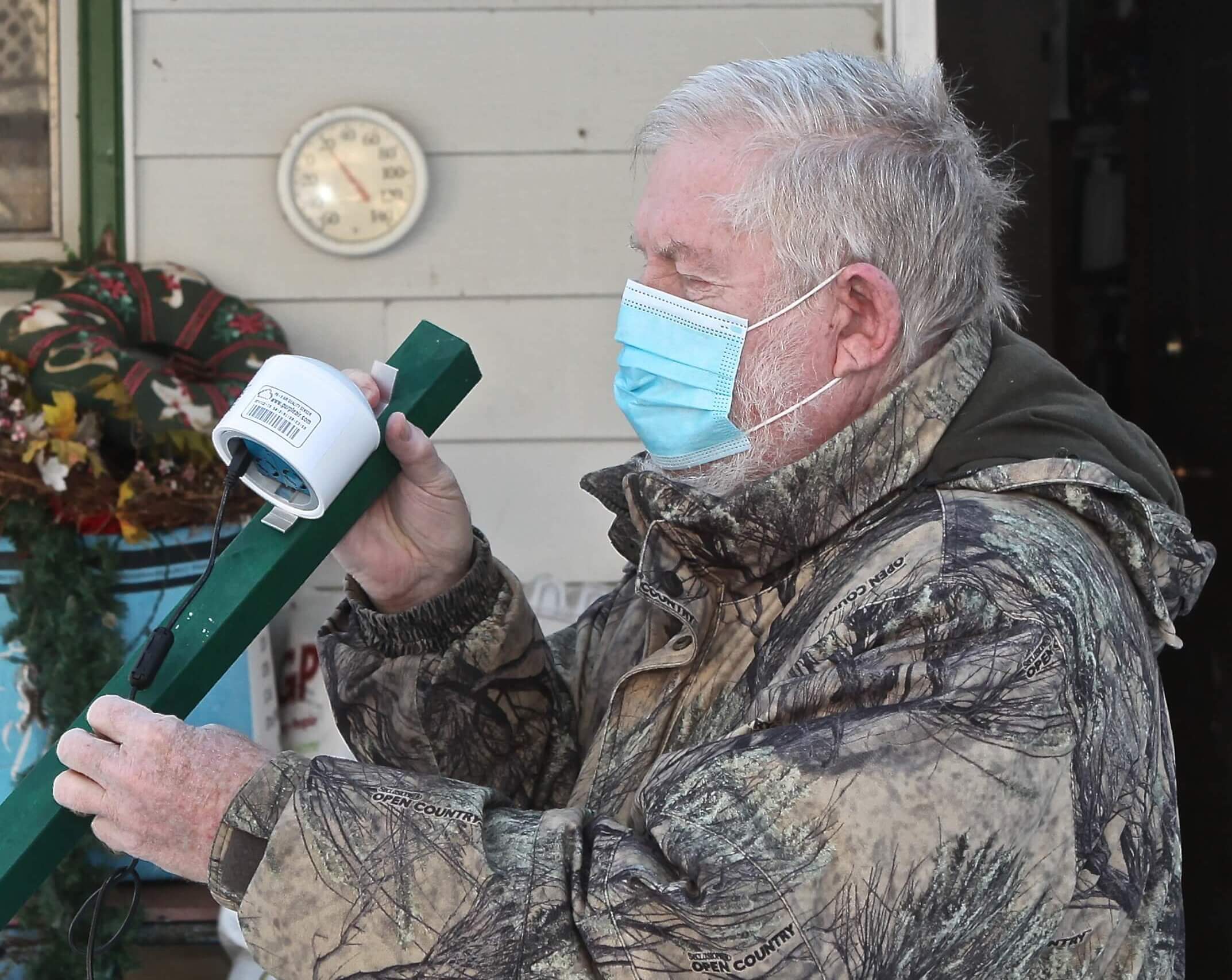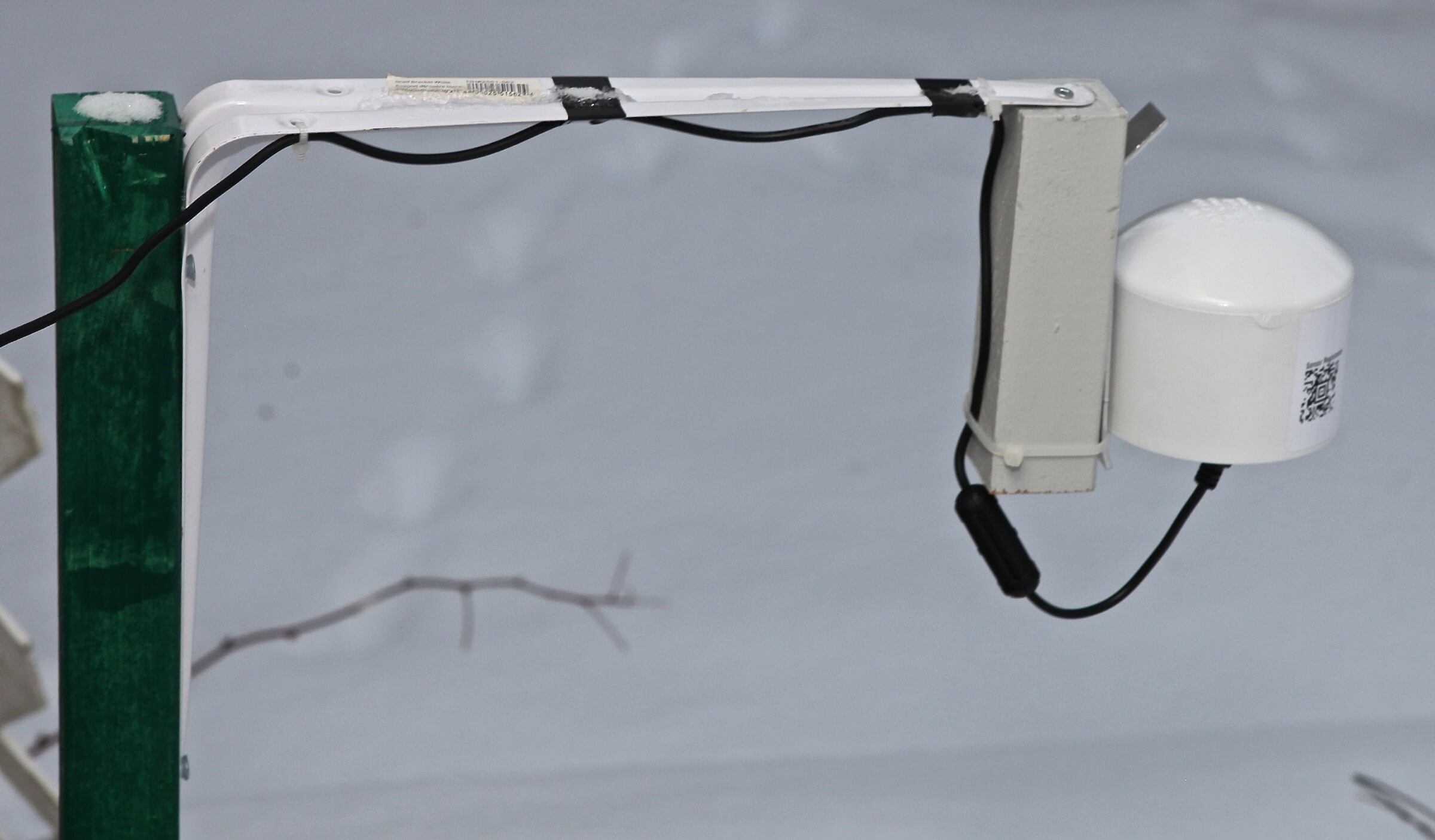AU project monitors air quality in northern Alberta
Citizen scientist detects high particulate-matter level thanks to AU equipment
On Dec. 12, 2021, Denis Carnochan was sleeping in his home in Wabasca-Desmarais, Alta., when he woke up having an asthma attack.
The smell of smoke filled his home, and when he looked out the window, it appeared as if a thick fog had settled in.
“It was a really dangerous situation for me, and I concentrated on getting my breathing manageable,” he said. “My neighbour called from the other end of the street and their situation was even worse,” as someone in the house suffered from chronic obstructive pulmonary disease.
Two days later, another wave of smoke hit the community. Carnochan had fortunately already been monitoring air quality since summer 2021, using a particulate matter sensor provided to him as part of the Athabasca and Northern Alberta Particulate Air Quality project, a small research initiative at Athabasca University (AU) that provides citizen scientists like Carnochan with PurpleAir sensors.
Real-time monitoring
These sensors provide real-time monitoring of air quality, and transmit that information to PurpleAir, which displays air quality readings from sensors placed all around the world on a detailed map. Carnochan’s sensor showed a very high reading of about 900 on the Air Quality Index, where anything above 200 can be hazardous to human health.
Dr. Martin Connors, a physics professor at AU and one of the organizers of the project, said he was surprised by the level of pollution that was in the air in Wabasca. At the time the measurement was taken, the sensor in Wabasca was showing more particulate matter in the air than any other location on the planet.
“We’re talking about levels of pollution that were five times the level of Beijing on a bad day,” he said.

Citizen science getting results
Carnochan shared his concerns with a municipal councillor, and learned the smoke was coming from a brush pile being burned near the community, a practice that’s common in many rural areas and doesn’t typically cause significant problems.
In this case, however, the burning coincided with a weather event known as a thermal inversion, which effectively traps the smoke near the ground.
“If the weather conditions had been different, and the smoke would have been allowed to rise, we wouldn’t have noticed it,” Carnochan said.
“We’re talking about levels of pollution that were five times the level of Beijing on a bad day.”
– Dr. Martin Connors, professor of astronomy, mathematics and physics, Athabasca University
Sounding the alarm
But notice it he did, and thanks to the air-quality monitor data that showed just how bad the problem was, he was able to raise the alarm.
After reporting his concerns and sharing the data with his councillor, he said the brush piles were extinguished. Now, the local government is looking at installing other air monitors throughout the municipality.
“Without this air monitor I fear nothing would have been done for lack of evidence,” he said. “But because the pollution levels were recorded and could be seen online by other observers including Alberta Environment, I believe that many became concerned.”
Carnochan added he hopes the municipality will purchase and install more air-quality sensors throughout the community.

Project origins
Connors said work on the air-quality project began a few years ago, with researchers associated with the Athabasca University Geophysical Observatory and others at AU—including Dr. Josie Auger, Dr. Janelle Baker, Dr. Scott Ketcheson, and Richard Dixon—working on the project. The project was funded with an $1,800 grant from AU’s Academic Research Committee.
The intention is to provide air-quality monitors in rural communities in northern Alberta, empowering residents to take part in scientific monitoring work in those communities. So rather than using instruments to sense auroral activity, which they do at the observatory, they turned their attention to an instrument that would monitor smoke.
Connors said he sees an opportunity to get AU learners involved in this process as well, since learners are spread throughout the country, but that next stage of the project is still in the planning stage.
To learn more about the project, including how you can get involved, contact Martin Connors.
Watch Connors on CTV Morning Live
Connors joined CTV Morning Live for Clean Air Day, June 8, to share how a research project is empowering citizen scientists to monitor air quality in their own communities and advocate for change.